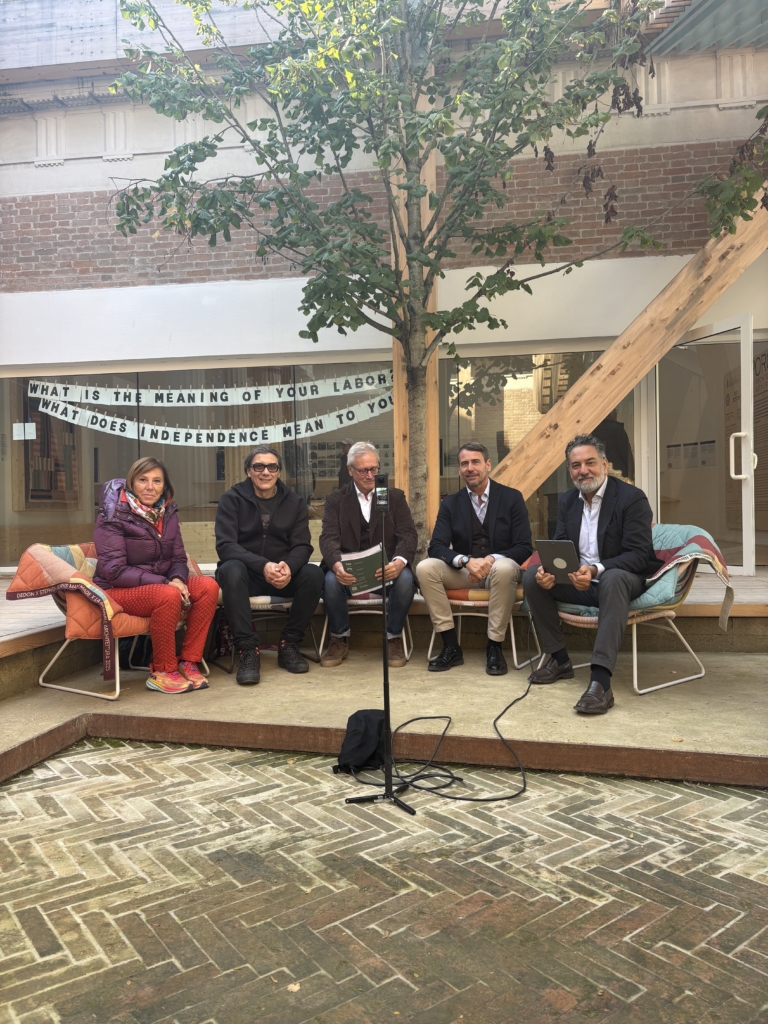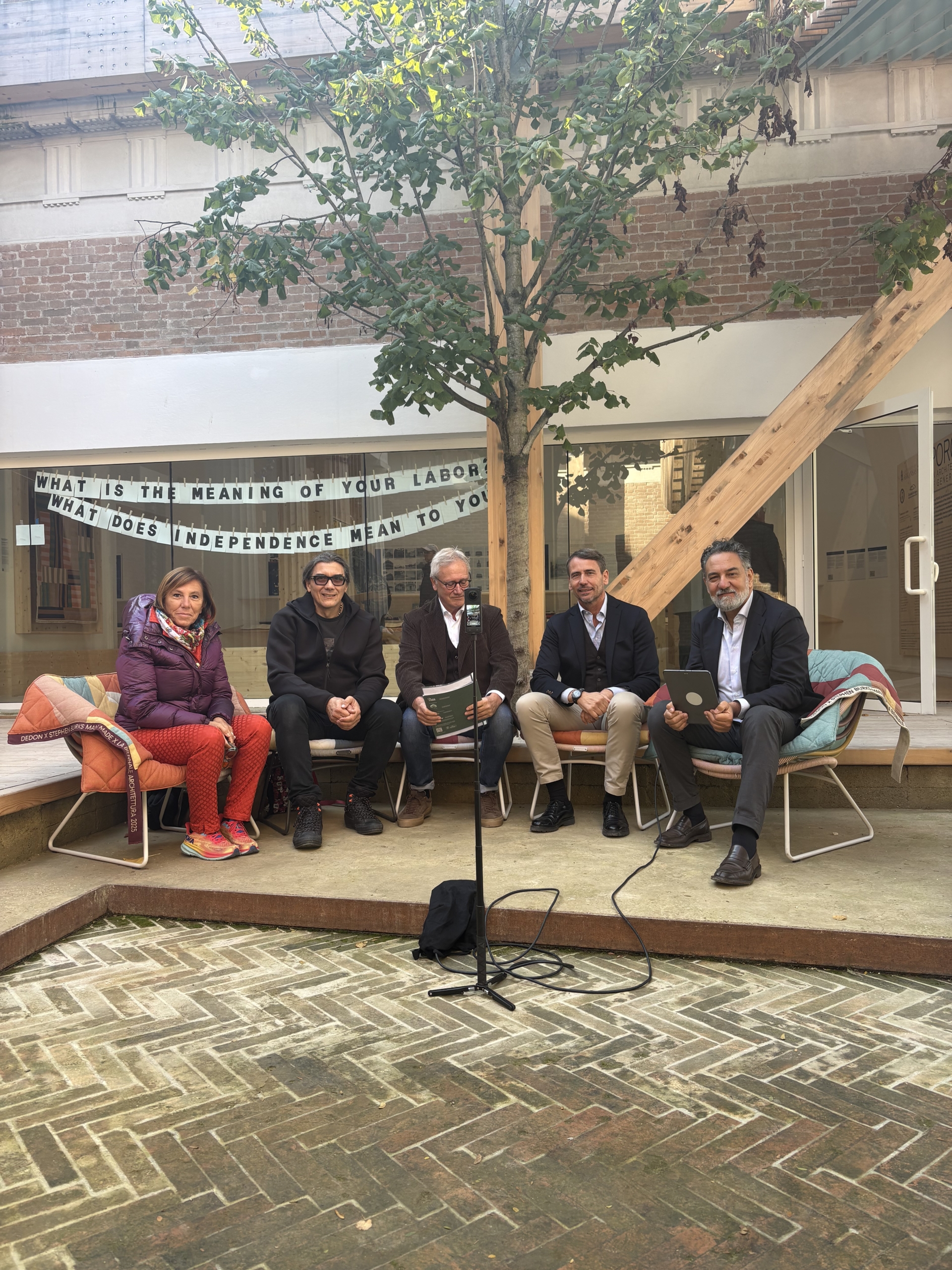The Concilio Europeo dell’Arte partners in “Ali e Radici,” presented on 28 October 2025 at the U.S. Pavilion of the Biennale
It was presented on 28 October 2025, in the agora of the United States Pavilion at the Giardini of the Biennale, Ali e Radici (“Wings and Roots”), a participatory art project conceived by artist and author Marko Guglielmi Reimmortal and promoted by La Leva, created with the involvement of Italian and international schools and universities. The Concilio Europeo dell’Arte supports the initiative as partner and patron, recognising its cultural and social value and its strong alignment with the principles of the New European Bauhaus, which brings together beauty, sustainability and inclusion as central elements of urban transformation.
Ali e Radici is based on the idea that building today does not simply mean constructing new buildings, but creating bonds, shared memory and a sense of belonging. The project brings together different generations — children, teenagers, university students, teachers and professionals — and different territories, Italy and the United States, to give shape to a collective creative process. According to this vision, art is not a decorative element added “after the fact”, but an integral part of how we imagine and inhabit spaces: a cultural device capable of generating identity and community.
At the heart of the project is a very clear and powerful symbolic system built around two universal archetypes: the wings, representing dreams and the future, and the roots, evoking stability, commitment, memory and responsibility towards place. These two forces — vision and belonging — are not presented as opposites, but as parts of a single narrative and spatial structure: to grow means to imagine, but also to care for what we build so that it endures.
The creative process leading to Ali e Radici is deliberately intergenerational and crosses multiple educational levels. Primary school children, guided by teacher Barbara Riccardi (Italian finalist for the Global Teacher Prize, often described as the “Nobel” for teaching), take part in workshops where they express wishes, fears and visions of the future. These imaginaries are then collected and reinterpreted by students from upper secondary art schools, who transform them into mosaics produced using scrap materials from the ceramic industry, following a logic of circular economy and reuse. The mosaics become small “windows onto dreams”, integrated into public space, making visible the passage from childhood thought to artistic translation.
In parallel, university students, involved through the Rome Center of the University of Arkansas and the Fay Jones School of Architecture and Design, are invited to design and create six throne-sculptures, three dedicated to the theme of wings and three to the theme of roots. These monumental seats are conceived as symbolic presences in shared space: places of rest, but also of reflection and relation. From a material point of view, the thrones will be produced in low-emission ecological concrete and finished with recycled ceramic, with particular attention both to sustainability and to the formative value of the process: in fact, the students are not only producing an aesthetic object, they are helping to define an urban and social gesture.
Alongside these distributed works, the project also includes a main sculpture by Marko Guglielmi Reimmortal. This sculpture plays a role of threshold and synthesis: it welcomes those who enter the space and immediately renders legible the conceptual core of the initiative, namely the meeting point between collective imagination and shared responsibility towards the inhabited environment. Together, the main sculpture, the thrones and the mosaics configure an environment in which art is not placed in a museum white cube, but integrated into the landscape of everyday life.
From a methodological standpoint, Ali e Radici positions itself as an applicable model of the New European Bauhaus: a concrete way of combining aesthetic quality, environmental sustainability, social inclusion and accessibility of spaces. The use of recycled materials, the active involvement of students and young people in design and production, the collaboration between schools, universities and professionals, and the international dialogue between Italy and the United States bring the project close to the key themes of European policies on sustainable urban regeneration. In this perspective, to regenerate does not only mean to build, but to restore identity, vision and shared value to places.
The Concilio Europeo dell’Arte recognises in Ali e Radici an example of cultural practice that unites education, active citizenship and spatial transformation. Art becomes an educational lever, because it connects children, adolescents and university students in a process of reciprocal learning, and at the same time a social lever, because it encourages dialogue across generations and fosters a shared sense of community. This is precisely the kind of living, collective process that the Concilio promotes: projects in which artistic creation becomes civic infrastructure, capable of shaping the quality of living and the way people recognise themselves as part of a place.
The project presented in Venice will be followed and documented throughout all its development phases: from the workshops with schools, to the design and production of the works, through to installation in public space. The objective is to share not only the final result, but above all the human and cultural process that makes it possible.
Date
28 October 2025
Press review
No links available


